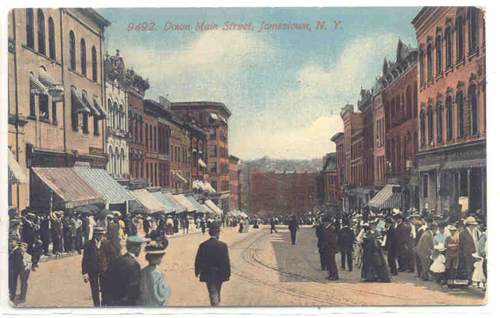Jul 16 2014 Jamestown, New York, Part II: Lessons learned from a history of cross-sector collaboration
Thirty-year-old study of intersector collaboration still relevant today
 By the time the Community Revitalization Project concluded its time in Jamestown, New York, it had identified several challenges that limited the city’s prospects for revitalization. By working with the community and establishing a Steering Committee, the Project was able to understand the source of these obstacles and develop a series of “lessons learned” that could be used to help leaders in similar situations better understand their options.
By the time the Community Revitalization Project concluded its time in Jamestown, New York, it had identified several challenges that limited the city’s prospects for revitalization. By working with the community and establishing a Steering Committee, the Project was able to understand the source of these obstacles and develop a series of “lessons learned” that could be used to help leaders in similar situations better understand their options.
For starters, Knowlton and the team from Harvard realized that leaders often misdiagnosed the source of problems. Although many developmental issues had far-reaching social and economic consequences, leaders often viewed each issue within a silo, proposing narrow solutions that failed to address to underlying causes of the problem.
Most importantly, there was a lack of communication across sectors. As the report explained, both the private and public sectors needed to understand that they could not “embark on this kind of broad-ranging effort alone.”
Still, the report continued, communication was not enough – each sector had to be willing to learn from the other. As Knowlton explained:
The collaborative process must be educational in character. The public sector must learn to set goals and to think strategically as the private sector does — at its best. The private sector must learn to participate actively and patiently in the arduous process of building coalitions and making decisions consensually as the public sector does — at its best.
As we’ve seen in our cases, the strongest projects are those that capitalize on the strengths of each partner and are forged on a shared vision of success — a recognition that each partner brings a unique perspective, set of resources — and an understanding of the problem at hand. By allowing leaders from each sector to play a more proactive role in each part of the process, intersector collaborations can mitigate many of the challenges facing individual organizations and can better navigate the roadblocks to help move projects forward. While it is important to create an environment of open communication between partners, it is also important to recognize that too many competing interests can impede the process. Prioritizing the results and identifying the key partners can streamline the process and help avoid unnecessary conflicts.
While all of these lessons help build a framework, perhaps the most important lesson from the Jamestown experience is this: The effort does not end. Revitalization is a process of education, discovery, and commitment over time.
There is no one-size-fits all for cross-sector collaboration. As Knowlton explained: “The process evolves as it goes along, the sequence of events varying from community to community.”
The goal of The Intersector Project is not to provide a rigid framework for cross-sector collaboration; we want to engage leaders across sectors and provide them with the tools and knowledge so that they can help their own communities succeed.
Read The Intersector Project’s full case study on the Jamestown Area Labor Management Committee, “Improving Labor Relations in Jamestown.”
Editor’s Note: This is the second in a three part series on the revitalization of Jamestown, New York. In part three of of our series, which will appear on Friday, Peter Lombardi will discuss the Jamestown Renaissance Corporation its cross-sector work.
